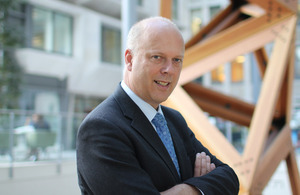The intensity of last Saturday's football match between Tottenham Hotspur and Chelsea was palpable even to those listening to it on the radio, let alone the fans present at White Hart Lane. This was a classic London derby, a game of pulsating action and plenty of bite. Everyone who saw the two sides compete for a hard-fought 1-1 draw would agree that this was football at its most visceral and unforgettable.
After the game, I reflected on football's ability to leave a mark. What happens on the pitch becomes etched in our collective memory, imprinted forever in our consciousness. No doubt the game's inherent theatre, its speed and its competitiveness are reasons for this.
Hillsborough case law on psychiatric injury
But, as the 25th anniversary of the
Hillsborough disaster looms at the end of the current season, it is important to recall that sporting events can leave a mark for different reasons. And, when it comes to Hillsborough, it is a regret to note that the law on psychiatric injury is both unsatisfactory and borne of what we now know to be erroneous assumptions about what happened at Sheffield Wednesday's historic ground on 15 April, 1989.
At Hillsborough that day, 96 fans died in a terrible crush early on in an FA Cup Semi-Final between Liverpool and Nottingham Forest. The crush resulted in injuries to a further 766 people. Those involved ranged from children to the elderly. The tragic incident is Britain's worst-ever stadium-related disaster.
Appalling misinformation appeared in the public domain just hours after the disaster. It grew worse and worse, as the police sought to blame fans for what happened rather than take any responsibility themselves. The Sun newspaper famously poured oil on troubled waters with a front page splash that only its then-editor, Kelvin MacKenzie, believed in. MacKenzie's story, headlined 'The Truth', was a vicious libel on Liverpool fans, and rightly led to The Sun being all but boycotted in Liverpool .
The real truth
But the old saying is that the truth will out - and soon enough it did. The Taylor Report, published in 1990, found that the main reason for the disaster was a failure of police control. Lord Taylor's inquiry also led to Liverpool's fans receiving their first official exoneration - and to the police being roundly criticised for lying and evasiveness. Later, in September 2012, came the findings of the Hillsborough Independent Panel. This categorically found that no Liverpool fans were responsible for the deaths, and said that attempts had been made by the authorities to conceal what happened, including the alteration by police of 116 statements relating to the disaster.
Against all this a number of fans and their families rightly sought redress for their sufferings because of Hillsborough. Indeed, the disaster went on to spawn what remains, to this day, the leading authority in domestic case law on psychiatric injury. That case is
Alcock v Chief Constable of South Yorkshire Police [1992] 1 AC 310. Here, Alcock and several other claimants were what the law describes as ‘secondary victims’: they were not primarily affected, in the sense that they were injured or in danger of injury, but they suffered harm because of what they witnessed.
Rewind to what I said at the beginning of this piece. Football is an intense, visceral spectacle, conducted as mass participation theatre. How awful must it have been for those who saw their loved ones at risk, injured or even killed in the Hillsborough disaster?
Alcock needs unstitching
It seems obvious that the effect of what they saw would have been profound and damaging. But the Alcock case, which went all the way to the House of Lords Judicial Committee, imposed a series of "control mechanisms" to fetter a victim's ability to bring a claim. If these "control mechanisms" are not met, there is no duty of care, and therefore no possibility of a claim for negligence. Chief among them is the requirement that a claimant must perceive a "shocking event" with his or her own senses, either as an eye-witness or happening upon its immediate aftermath. This means that if a father saw his son crushed via television footage, or if he arrived some 30 minutes after the incident, he would not be able to bring a claim.
Lord Steyn of Mostyn has described the law on recovery for psychiatric harm as "a patchwork quilt of distinctions which are difficult to justify". In another judgment (Frost v Chief Constable of South Yorkshire Police [1999] 2 AC 455), Lord Hoffman said that "the search for principle was called off [in Alcock]". The "control mechanisms" were "more or less arbitrary conditions which a plaintiff had to satisfy and which were intended to keep liability within what was regarded as acceptable bounds". Into the bargain, they are more or less impossible to understand by the ordinary man.
The 'ordinary man' - and woman - are the people who were at Hillsborough nearly 25 years ago, they were at White Hart Lane on Saturday and they attend football matches up and down the country week in, week out. The House of Lords has stated that it can go no further than the principles articulated in Alcock, dubious as they are. Only Parliament can legislate for change.
Against what we now know to be the truth of Hillsborough, it is high time that we revisit Alcock. It seems more than possible that its principles were informed by the extraordinary level of misinformation dominating the media and political agendas at the time. It is time for this particular patchwork quilt to be unstitched and put back together in a way that offers real justice for victims of psychiatric injury.



